Ty Adams
KNIFE MAKER
So I was going to run a test on wood that has not been stabilized. The test was to determine if the work of putting 10 to 14 coats of Tru-Oil is worth it over using a grain sealer and only 4 or 5 coats. The test blocks are going to be finished and let sit outside to see how they hold up.
On a regular basis I see post about finishing maple. So I decided this morning to double up and show how I finish curly maple. I can't take credit for all of it. 98% of what I do John Doyle helped with. The process is what works best for me.
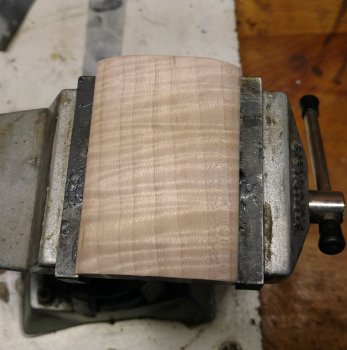
I sand the wood up to 1000 grit to give it a nice smooth finish.
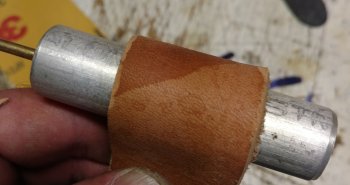
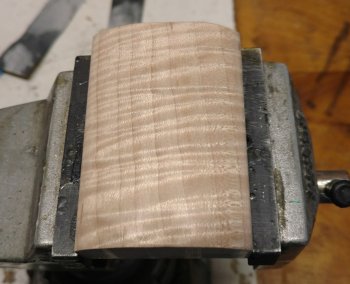
Taking a piece of leather with the edges trimmed off I burnish the wood. You want the wood to get warm from rubbing it hard. The material will look almost polished at this point.
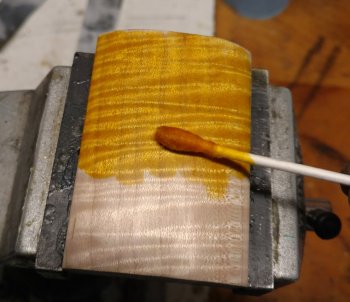
Fiebings Leather dye is applied slowly with a q-tip. For me if you put the dye on to fast it soaks in to the more dense grain just as fast as they porous grain. This takes away from some of the more settle character of the wood.
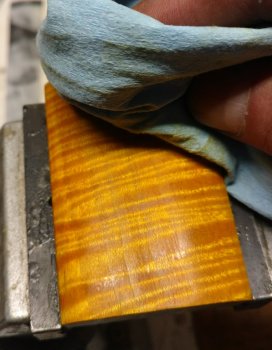
Once the dye stops soaking in and stays on top. Use a paper towel to wipe off the extra dye.
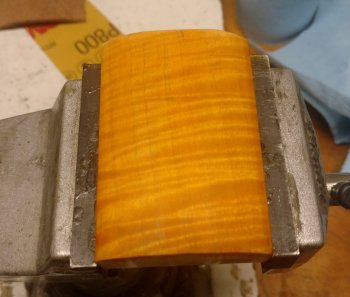
Once it dries sanding to 1200 grit or higher really helps bring the grain out. It looks dull at this point but that will change.
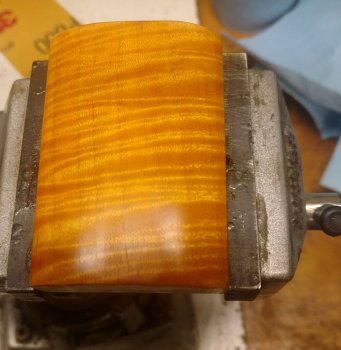
Burnish the wood with the leather wrapped around something round again. Rub until the material is warm to the touch. This step is one of the most important steps to make the grain pop.
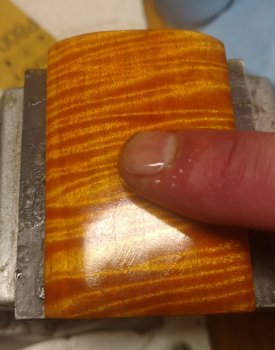
Use your finger to rub oil on. This step takes 2 to 3 coats before it stops soaking into the wood. Wipe the oil off with a blue paper towel ( thanks Ed Caffery for that tip.)
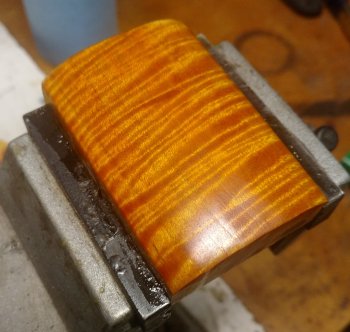
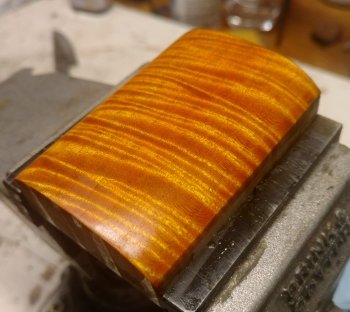
And here it is after the first application of oil. It only gets better from here. After 2 coats of oil I take the high spots off with 0000 steel wool. After 10 to 14 coats I buff it with pink no scratch. Please feel free to add any more tips.
On a regular basis I see post about finishing maple. So I decided this morning to double up and show how I finish curly maple. I can't take credit for all of it. 98% of what I do John Doyle helped with. The process is what works best for me.

I sand the wood up to 1000 grit to give it a nice smooth finish.


Taking a piece of leather with the edges trimmed off I burnish the wood. You want the wood to get warm from rubbing it hard. The material will look almost polished at this point.

Fiebings Leather dye is applied slowly with a q-tip. For me if you put the dye on to fast it soaks in to the more dense grain just as fast as they porous grain. This takes away from some of the more settle character of the wood.

Once the dye stops soaking in and stays on top. Use a paper towel to wipe off the extra dye.

Once it dries sanding to 1200 grit or higher really helps bring the grain out. It looks dull at this point but that will change.

Burnish the wood with the leather wrapped around something round again. Rub until the material is warm to the touch. This step is one of the most important steps to make the grain pop.

Use your finger to rub oil on. This step takes 2 to 3 coats before it stops soaking into the wood. Wipe the oil off with a blue paper towel ( thanks Ed Caffery for that tip.)


And here it is after the first application of oil. It only gets better from here. After 2 coats of oil I take the high spots off with 0000 steel wool. After 10 to 14 coats I buff it with pink no scratch. Please feel free to add any more tips.
